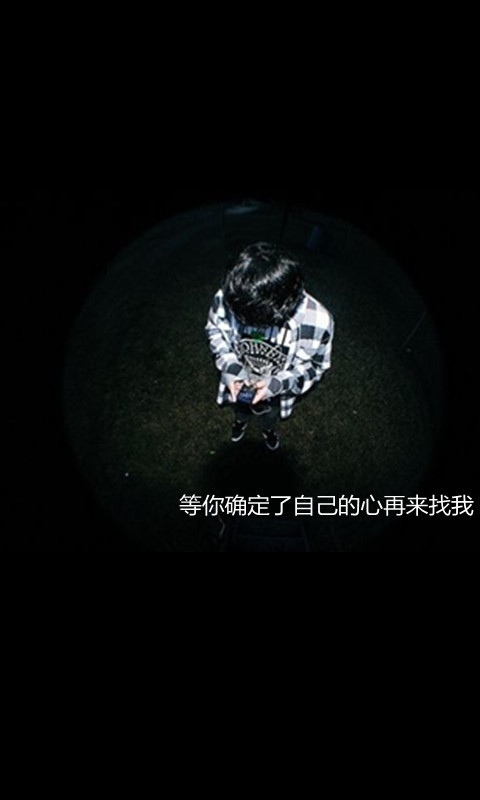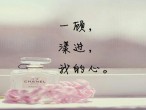
去颐和园游玩的英语作文【一】
星期三,我想去和园玩,我问妈妈:“妈妈,你能带我去和园玩吗?”妈妈回答:“行啊。”过了一会儿,和园到了,我一看,哇!好威武啊!和园门前有两棵结满橘子的橘树,还挂着两个大灯笼,旁边还有一面大大的战鼓,其他地方都栽了一棵棵翠绿的大树。一进门,就可以看见一条大龙舟,往右走,一串串柿子似的小灯笼,美丽极了!走着走着,可以看见一个高大的凉亭,不过你千万不要觉得这很奇怪,因为和园里多的是凉亭。
之后,我不知不觉的来到了有瀑布的地方,这些瀑布好壮观啊!有岩石和茂盛的绿草衬托,这瀑布才会又壮观又逼真,正如唐朝诗人李白所写的“飞流直下三千尺,疑是银河落九天”此诗句。我仔细观察了一下,这瀑布竟然有一个通道,里边黑漆漆的,有一条小溪,我想:洞里边为什么会有小溪呢?原来是洞外面有太多的`水,有一些水流了进来,而形成的小溪。
欣赏完这里之后,我和妈妈爬上小山坡,我一看,哇!一片花海!五颜六色,好看极了,有白色的、粉色的、紫色的、蓝色的……这些花原来是一只巨大无比的孔雀的羽毛啊,这只孔雀栩栩如生,十分精致。
走着走着,我见到了有卖糖画的地方,就拉着妈妈去看,我也是比较贪吃的,所以叫妈妈买了一只用糖画画出来的猴子,甜得出奇。之后我看到一个好玩的游戏,叫牛转乾坤圈,规则是投到哪个东西就能得到它,我想要那只手镯送给奶奶,连投六个,一个都没投中,真遗憾。
虽然玩牛转乾坤圈的时候没有投中一个东西,但是我很开心能见到这么多美丽的风景,我喜欢和园!
去颐和园游玩的英语作文【二】
The sky is blue, the sea is very blue, the sky and sea looking liketogether, there is a small island in the sea in the distance, near the sea a few fishing boats, the scenery is very charming, my mother and I arebarefoot in the golden beach, waves of joy to the shore, I high lift feet onthe waves, the waves had no feet very comfortable, and I surf to playloud screaming, running towards the shore.
There are many kinds of sea shells on the beach, some like a small fan,some like horns, some like a pagoda, there's like a hat, these shells arein different poses and with different expressions. There are many smallcrabs under the rocks of the shore, they quickly into the sand,disappeared in the twinkling of an eye. There is a small crab hiding in the shell, mom told me to call the hermit crab. My mother taught me to catch crabs, I was afraid of, then can also be quickly caught, see small crabsswim really happy in my bucket, I will bring them home, so every day tosee them.
The beach is really very interesting, I really want to leave it.
去颐和园游玩的英语作文【三】
Last Sunday we went to the countryside. There was golden wheat all over the fields/The fields were covered with golden wheat. Large and colourful apples and pears were hanging on the trees. We could see some peasants were busy getting in the crops in the fields,and others were picking fruits under the trees. All the baskets were full of lovely fruits. It was also the fruit of the peasants'labour."No pains,no gains."What a magnificent/beautiful picture(it was!It seemed as if we were wandering in a splendid/wonderful world.
I love autumn. I love the harvest time.
去颐和园游玩的英语作文【四】
I walked down my street with my dad. The sun shone on Mrs. Stokes, watering her potted plants. 我和爸爸沿着我们的街道走,太阳照到了斯托克斯太太身上,她正给她的盆栽植物浇水。
“Hello, Mrs. Stokes,” I called loudly. “I’ll water those plants for you.” “你好,斯托克斯太太!”我大声喊,“我来给您浇花吧。”
Mrs. Stokes smiled. I watered her potted plant. My dad pulled out some weeds. People like to help each other on our street. 斯托斯太太微笑了,我给她的盆栽植物浇了水,爸爸把一些杂草拔了出来。这条街道上,人们很乐意帮助他人。
I walked on with my dad. The sun shone on Hope and her mom. They were singing for the people who went by. 我跟我爸爸继续走着。太阳照到了浩波和她妈妈身上,她们正为路过的`人们唱歌。
We liked their songs. My dad dropped some money in a hat beside them. Hope smiled. 我们喜欢她们的歌。爸爸在她们旁边的一顶帽子里面放了点钱,浩波微笑了。
I walked on with my dad. The sun shone on a man and his brown dog. The dog wagged its tail. 我跟爸爸继续走着。太阳照在一位男人和他的棕色狗身上。狗摇着尾巴。
“Can I take Arthur for a walk for you, Mr. Rose?” I asked. “罗丝先生,我帮您把亚瑟带出去遛一遛,行吗?”我问。
“Thank you,” he said. “I’ll have a rest.” “谢谢你,”他说,“我打算休息一会儿。
” I walked on with my dad. The sun shone on the buds bursting on the trees. I was happy. 我跟爸爸继续走着。太阳照在树上蓦然生出的嫩芽上,我很喜欢。
Mrs. Stoke’s plants were watered. Hope and her mom were singing for the people who went by. Mr. Rose was resting. 斯托克斯太太的植物已经把水浇过了。浩波和她妈妈在为从那儿经过的人们唱歌。罗丝先生正在那儿休息。
I was going to the city park to play with dad and Arthur. I love where I live. 我跟爸爸正要到城市公园去和亚瑟玩。我爱我居住的地方。
去颐和园游玩的英语作文【五】
??颐和园英语作文范文The Summer Palace can be divided into two parts: Longevity Hill and Kunming Lake. The whole garden covers an area of 290 hectares, of which three- fourths consists of a lake and rivers. This imperial garden features 3,000 room-units and covers an expanse of 70,000 square meters with more than 100 picturesque spots of interest. The layout of the Summer Palace includes three groups of architectures: palaces where the emperor attended to state affairs, resting palaces of the emperor and empress, and sightseeing areas. Entering the East Gate we will come the office quarters. Entering the East gate we will come to the office quarters. The annex halls on both sides were used for officials on duty.
This is the Gate of Benevolence and Longevity. Above the door there is a plaque bearing the same name in both Chinese and Manchurian characters. The gigantic rock in the foreground is known as Taihu rock, or eroded limestone, quarried in Jiangsu Province and placed here to decorated the garden.
On the marble terrace sits a bronze mythical beast, known as Qilin or Xuanni. It was said to the one of the nine sons of Dragon King. A point of peculiar interest is that it has the head of a dragon, antlers of a deer, the tail of a lion and hooves of an ox, and is covered with a unique skin. IT was considered an auspicious creature that brought peace and prosperity.
This grand hall is the Hall of Benevolence and Longevity. It was built in 1750, and was known as the Hall of Industrious Government. Emperor Qianlong ruled that the halls where monarchs attended to state affairs would be named after them. After the rebuilding of the Summer Palace, the hall was renamed, suggesting that benevolent rulers would enjoy long lives.
The arrangement of the hall has been left untouched. In the middle of the hall stands a throne made of sandalwood and carved with beautiful designs. In the background there is a screen carved with nine frolicking dragons. On either side of the throne there are two big fans made of peacock feathers, two column-shaped incense burners, crane-shaped lanterns and an incense burner assuming the form of Luduan, a mythological animal which was suppose to have the power to prevent fire. The small chambers on eight side were where the Emperor Qianlong and Empress Dowager Cixi rested and met officials on formal occasions.
On the verandah in the foreground of the hall there are bronze statues of dragon and phoenixes which served as incense burners on major occasions. They are hollow and smoke comes through holes on their backs. Also on the veranda are Tai Ping (Peace bronze water vats made during the reign of Emperor Qianlong. As a precaution in case of fire, a fire was lit underneath the vats in the winter to keep the water in them from freezing.
(At the entrance of Garden of Virtuous Harmony
Outside the East Gate–in front of the Hall of benevolence and Longevity- in front of Garden of Virtuous Harmony-in front of the Grand Theater Building- a lakeside walk from the Garden of Virtuous Harmony to the Hall o Jade Ripples- in front of the o Jade Ripples- in front of the Yiyunguan (Chamber of Mortal Being-Hall of happiness and longevity- in front of the Yaoyue (Chamber of Mortal Beings-Hall of Happiness and Longevity-in front of the Yaoyue (Inviting the Moon Gate of the Long Corridor- strolling along the Long Corridor- visiting an exhibition of cultural relics- in front of the Hall of Dispelling Clouds- inside the Hall of Dispelling Clouds- atop the Tower of Buddhist Incense- on a hilltop leading from the back door of the Tower of Buddhist Incense- on a hilltop leading from the back door of the Tower of Buddhist Incense- inside the Garden of Harmonious Interest –outside the south gate to Suzhou Shopping Street- atop the stone bridge inside the Suzhou shopping street –on the road from the south gate of suzhou shopping street- on the road form the south gate of suzhou shopping street to the marble boat- in front of the ruins of the Garden of complete spring –along the lakeside by the marble boat-boating on the Kunming Lake-leaving out through the East Gate.
(Outside the east gate
Ladies and Gentlemen:
Welcome to the Summer Palace. (After the self-introduction of the guide -interpreter I hope this will be an interesting and enjoyable day for you.
During our tour, you will be introduced to time honored historical and cultural traditions, as well as picturesque views and landscapes.
The construction of the Summer Palace first started in 1750. At that time, the Qing Dynasty was in its heyday and China was a powerful Asian country with vast territories. The monarch in power then was Emperor Qianlong. With supreme power and large sums of money, he summoned skillful and ingenious artisans from all over the country to carry out this construction work in honor of his mother's birthday. After 15 years and one seventh of the nation's annual revenue spent, the Garden of Clear Ripples was completed and served as a testimony to China's scientific and technological achievements. In 1860, this vast royal garden was burnt down along with the Yuanming Yuan (Garden of Perfection and Brightness by Angol-French allied forces. In 1888, Empress Dowager Cixi reconstructed the garden on the same site and renamed it the Garden of Nurtured Harmony (Summer Palace. Characterized by its vast scope and rich cultural embodiments, the Summer Palace has become one of the most famous tourist sites in the world.
This is the main entrance to the Summer Palace-the East Gate On top of the eaves of the door there is a plaque bearing a Chinese inscription which means "Garden of Nurtured Harmony", whose calligrapher was Emperor Guangxu. The gate that you are now entering was used exclusively by the emperor, the empress and the queen mother. All others used the side doors.



















